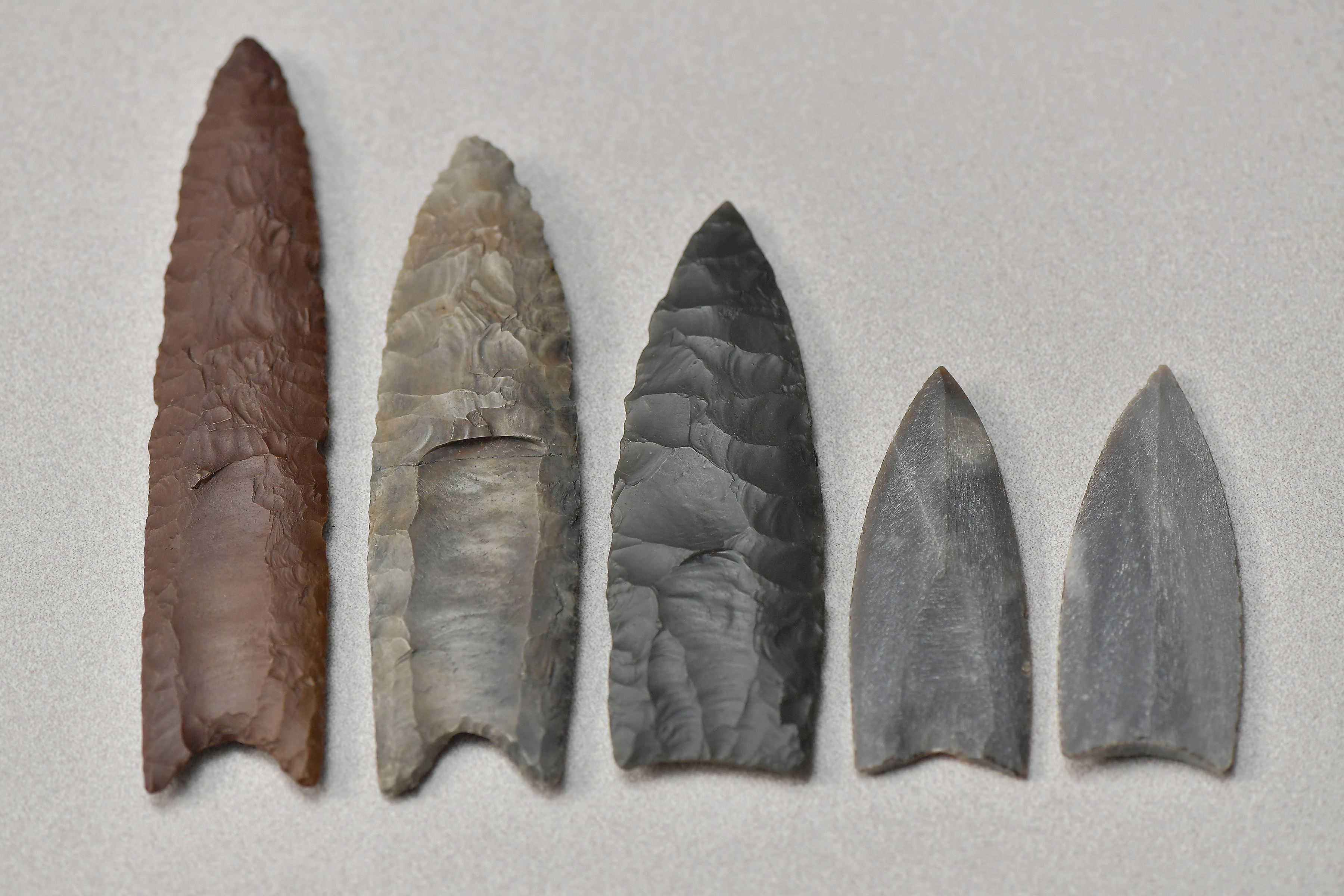|
Move over Indiana Jones — Archaeology has a fresh new face.
Metin I. Eren, director of archaeology and an assistant professor of anthropology in Kent State University’s College of Arts and Sciences, is using a $215,000 National Science Foundation grant to lead the analysis of weapons technology of some of North America’s earliest inhabitants, the Clovis culture, dating back 11,000 to 12,000 years.
Eren’s team chips away at the edges of rocks to shape them into replicas of ancient weapons and tools. The team then fits the replicas onto arrows and fires them from a high-tech projectile launcher, testing the velocities of different shapes and materials with a speed-timer while also running them through various cutting tests.
“As they spread, Clovis spear points start to change,” Eren said. “What we don’t know is if they intentionally developed them to adapt to different environments or prey.”
Eren, a native of Cleveland, came to Kent State University last year, from the University of Kent in Canterbury, England. The weapons analysis consists of a three-year collaborative study that includes Southern Methodist University and the University of Tulsa.
Along with Kent State doctoral student Michelle Bebber and British Academy Post-Doctoral Fellow Alastair Key, Eren’s cutting-edge lab is covering — and uncovering — nearly every facet of ancient stone technology.
“Our goal is to make this the premier archaeology lab in North America,” Eren said. “A lot of labs have the artifacts and material science equipment, but I think what makes Kent State’s lab so unique is that our approach is experimental. We recreate artifacts to test them.”
“I’m studying the morphology of the edges as it relates to function, from an engineering perspective,” Key said. “I’m trying to determine if our ancestors were manufacturing tools with specific forms intended.”
When Eren’s team completes its tests, they ship the tools to Tulsa or SMU, where researchers break them in durability tests.
Eren’s team is also doing some additional research close to home. Bebber recently received an award from the Ohio History Connection — formerly the Ohio Historical Society. The $2,500 grant will allow the team to fund field research at Berlin Lake in Mahoning County, where archaeological sites uncovered in the 1980s are now at risk for erosion and artifact looting.
“This expands the scope of our lab to field work for conservation, which is an entirely new dimension of archaeological research for Kent State,” Bebber said. Eren and Bebber said the stone tool artifacts at the Berlin site are from the late Archaic period — 3,000 to 5,000 years old.
“We’re protecting what’s there, but we could also find a whole series of new sites with older or more recent artifacts,” Eren said.
That work will take place this summer and create opportunities for undergraduate students to gain real field experience, Bebber said. The lab came with a room full of unexplored Ohio Hopewell artifacts from as far back as 11,000 years ago.
“We’re making discoveries just in this room,” Eren said. “There are hundreds of thousands of artifacts here already, and now we have grads, post-docs and undergrads all doing independent studies and publishing papers.”
Read more about the Eren lab.
Watch Eren’s research in action.
Photo Caption: Metin I. Eren, director of archaeology and an assistant professor of anthropology in Kent State University’s College of Arts and Sciences, prepares to fire a replica arrowhead at a special lab at the university's Kent Campus.
###
Media Contacts: Dan Pompili, 330-672-0731, dpompili@kent.edu Jim Maxwell, 330-672-28028, jmaxwel2@kent.edu Emily Vincent, 330-672-8595, evincen2@kent.edu |


